
Starksia is a genus of labrisomid blennies native to the western Atlantic Ocean and the eastern Pacific Ocean. Their typical length is 2 cm (0.79 in) SL. The generic name honours the American ichthyologist Edwin Chapin Starks (1867-1932) of Stanford University for his work on Pacific coastal fishes. As a genus Starksia is distinguished from other labrisomids by their scaled bodies, two obvious soft rays in the pelvic fin and the male's have an intromittent organ which is near to or attached to the first spine of their anal fins, which is also somewhat separated from the fin.

Starksia atlantica, the smooth-eye blenny, is a species of labrisomid blenny native to the western central Atlantic Ocean and the Caribbean Sea where it inhabits coral reefs at depths of around 8 metres (26 ft).

Starksia fasciata, the blackbar blenny, is a fish species of labrisomid blenny so far known only from around the Bahamas and Cuba. It inhabits shallow, rocky areas at depths of from 6 to 7 meters. This species can reach a length of 2.7 centimetres (1.1 in) SL.

Starksia greenfieldi, the Greenfield's blenny, is a species of labrisomid blenny endemic to the waters around the island of Tobago where it is found at depths of from 5 to 12 metres. It is named after David W. Greenfield, known for his work on blenniiform fishes. This species can reach a length of 1.9 centimetres (0.75 in) SL.
Starksia guadalupae, the Guadalupe blenny, is a species of labrisomid blenny native to the Pacific coast of Mexico where it is found at depths of from 9 to 18 m.
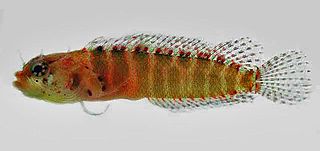
Starksia hassi, the ringed blenny, is a species of labrisomid blenny native to the Caribbean Sea and the Atlantic Ocean. It is and inhabitant of coral reefs and can be found at depths of from 6 to 175 m. This species can reach a length of 4 cm (1.6 in) TL.

Starksia langi, the Lang's blenny, is a species of labrisomid blenny native to the Caribbean coast of Central America, found in Belize, Honduras, and Panama. It is found in shallow waters of usually 3 m (9.8 ft) or less. This species reach a length of 1.7 cm (0.67 in) SL. It is named after Michael A. Lang, Director of the Smithsonian Marine Science Network and Smithsonian Science Diving Program. It is a prey of the lionfish.

Starksia lepicoelia, known commonly as the blackcheek blenny, is a species of labrisomid blenny native to the Caribbean Sea and adjacent Atlantic Ocean. It inhabits coral reefs and can be found at depths of from 8 to 20 m. This species can reach a length of 3.4 cm (1.3 in) TL.

Starksia lepidogaster, the scalybelly blenny, is a species of labrisomid blenny endemic to the Tres Marias Islands off the Pacific coast of Mexico. It can be found from very shallow waters to a depth of 13 m (43 ft).
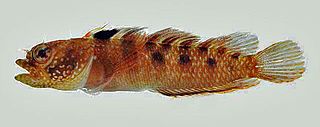
Starksia melasma, the black spot blenny, is a species of labrisomid blenny known only from reefs around Desecheo Island, Puerto Rico and St. Croix, U.S. Virgin Islands. This species can reach a length of 2.1 cm (0.83 in).
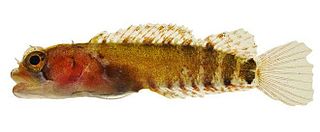
Starksia nanodes, the dwarf blenny, is a species of labrisomid blenny native to coral reefs of the Caribbean Sea and the adjacent Atlantic Ocean. This species can reach a length of 2.2 cm (0.87 in) SL.

Starksia occidentalis, the occidental blenny, is a species of labrisomid blenny native to reefs of the western Caribbean Sea where it occurs at depths of around 1 m (3.3 ft).

Starksia ocellata, the checkered blenny, is a species of labrisomid blenny native to the Atlantic Ocean and the Caribbean Sea from North Carolina, United States, to Brazil. This species is an inhabitant of reefs at depths of from 2 to 20 m and can often be found living inside of tube sponges. It can reach a length of 6 cm (2.4 in) TL. It can also be found in the aquarium trade.
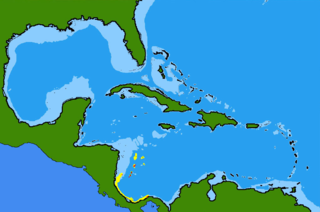
Starksia robertsoni, the Robertson's blenny, is a species of labrisomid blenny native to the Caribbean coast of Panama and Islas de Las Dos Hermanas near Portobelo. It was previously included in Starksia lepicoelia, and is also closely related to Starksia weigti and Starksia williamsi. It is named after D. Ross Robertson, a scientist from Smithsonian Institution. Males of this species can reach a length of 2.1 cm (0.83 in) SL while females are slightly larger at 2.2 cm (0.87 in).

Starksia sangreyae, the Sangrey's blenny, is a species of labrisomid blenny native to the Caribbean coasts of Belize and probably also Honduras where it is found in shallow waters at depths of from 1 to 2 m. It was originally known as Starksia atlantica, and is also closely related to Starksia springeri. The species is named after Mary Sangrey, a scientist from Smithsonian Institution. This species can reach a length of 1.6 cm (0.63 in) SL.
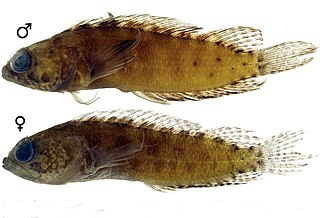
Starksia sella, the darksaddle blenny, is a species of labrisomid blenny endemic to the waters around the island of Tobago. It is an inhabitant of reefs, being found at depths of from 5 to 29 metres. This species can reach a length of 2.9 centimetres (1.1 in) SL.
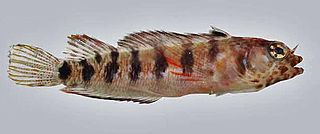
Starksia smithvanizi, the brokenbar blenny, is a species of labrisomid blenny native to the Caribbean Sea. It is found on reefs around islands at depths of from very shallow waters to 6 m (20 ft). This species can reach a length of 2 cm (0.79 in) SL. The specific name honours the ichthyologist William F. Smith-Vaniz.
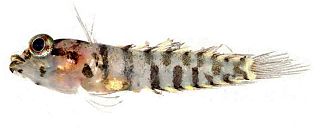
Starksia starcki, the key blenny, is a species of labrisomid blenny native to the Caribbean Sea. It inhabits coral reefs, preferring surge channels at depths of from 6 to 19 m. This species can reach a length of 4 cm (1.6 in) TL. It is also found in the aquarium trade. The specific name honours the Walter A Starck II in recognition of his contributions to marine biology.

Starksia weigti, the Weigt's blenny, is a species of labrisomid blenny known only from the Caribbean coastal waters of Belize at depths of from 6 to 8 metres. It was previously known as Starksia lepicoelia, and is also closely related to Starksia williamsi and Starksia robertsoni. It is named after Lee A. Weigt, head of the Smithsonian's Laboratories of Analytical Biology. Males of this species can reach a length of 2.4 cm (0.94 in) SL While females reach 1.9 cm (0.75 in). >
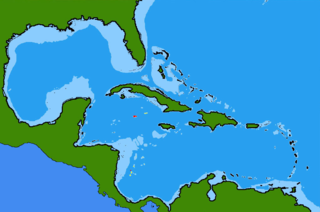
Starksia y-lineata, the forked bar blenny, is a species of labrisomid blenny native to reef environments of the Caribbean Sea. This species can reach a length of 1.9 cm (0.75 in) SL.




















